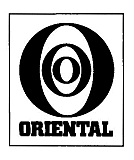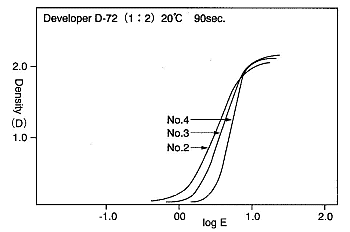 NEW SEAGULL RP-M PREMIUM
NEW SEAGULL RP-M PREMIUM
RP Paper
New Seagull RP-M is protected on both sides by thin polyethylene (Resin
Protected). It is a high-sensitivity, jet-black tone, general-use enlarging
paper.
From brilliant highlights to deep blacks, it has a rich range of tones
and exceptional luster. It is a paper that can be used for both commercial-quality
prints as well as news shots and will give you complete satisfaction. It
is especially well-suited for highly enlarged exhibition prints.
Safelights
For general-use enlargers with yellow-green filters, 15W bulbs should
be used and the safelight should be at least one meter from the enlarger.
New Seagull RP-M is a highly sensitive paper and should not be exposed
to light for long periods of time.
Be careful with prints after they have been exposed to see that no
further exposure takes place.
Exposure
To raise processing efficiency, the sensitivity of New Seagull RP-M
has been raised to a very high level. The maximum level of sensitivity
gets lower as the grade number rises; #2, #3, and #4 have progressively
lower maximum sensitivity levels. #3 is about 70% of #2 in sensitivity
level.
#4 is about 50% of #3 in sensitivity level.
For most printing paper, the density of the negative begins to fall
from grades #3 and #4 and in most cases cannot be raised much by increased
exposure.
Sensitivity and gradient
| Grade |
ISO Speed |
ISO Range |
| No .2 |
P640 |
R110 |
| No .3 |
P400 |
R90 |
| No .4 |
P320 |
R70 |
Processing temperature Processing time
| Process |
Processing temperature |
Processing time |
| Development |
20+_ 0.5 C |
60~90 sec. |
| Stop bath |
15~25 C |
15~30 sec. |
| Fixing |
15~25 C |
3~5min |
| Washing |
15~25 C |
5~10 min |
| Drying |
below 50 C 30~60 sec. |
Developer
The use of a pre-formulated developer fluid is most convenient. Readily
available developers for prints or dual-use developers of almost any type
(D-72, etc.) can be used.
Stop bath
For the stop bath, a solution of 1 .5% of glacial acetic acid is used.
| Time: 15 to 30 seconds. |
| Water |
1 liter |
| Glacial acetic acid |
15 ml |
Fixer
Pre-formulated fixers are recommended for your convenience. Fixers
intended for use with widely available papers can be used. To make sure
the prints will develop uniformly and not be affected by contaminants in
the developer, the prints should be shaken in the developer.
When the fixing time is too long, there is a danger that tone gradation
will deteriorate so it is necessary to be careful. Keep the total fixing
time within 3 to 5 minutes. If you use a fast fixer, the fixing time drops
to between 30 seconds and 3 minutes.
Washing
The washing process can be finished in about five minutes by washing
in water while stirring. The stirring should not be to strong since the
corners of the prints may be damaged. If the washing is continued for too
long a time, the surface of the prints may become rough.
Drying
For drying, it is best to use a warm air dryer or dry the prints in
a place where there is good air circulation, using natural drying. Ferro-type
dryers should not be used.
Toning
New Seagull RP-M prints can be toned in a wide variety of ways. They
are not easily damaged by contaminants and the intensity of the image is
seldom lowered.
Use of selenium toners (Kodak F-24, etc.) are recommended.
Storage and treatment
New Seagull RP-M has a very high level of photo-sensitivity. Therefore,
it should be handled with care. Store the product at a low temperature
in a proper place. Ideally, the container should contain a desiccant. The
paper should be used quickly after the package has been opened.
Be careful to avoid exposing the paper for long periods to a safelight,
or letting the photo-sensitive gel come into contact with fingers. It is
difficult to tell the front surface from the back surface of the paper
so care should be taken when printing.
Types of paper
| Type |
Base paper |
Weight |
Texture |
Tint |
Image tone |
Grade |
| RP-M |
RP |
Medium weight |
Fine-matte |
White |
Jet black |
2~4 |
| Characteristics curve |
Spectral sensitivity |
 |
 |
|





